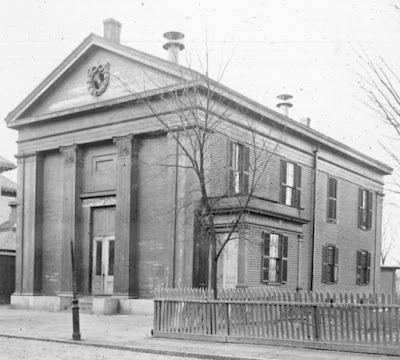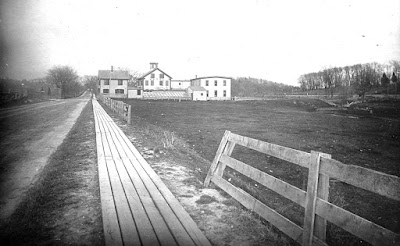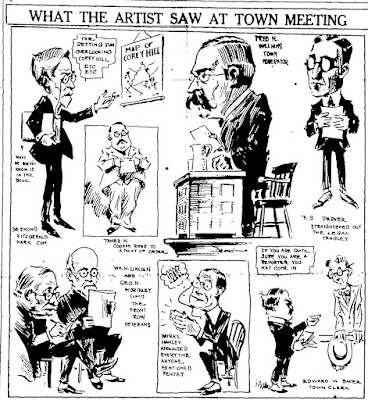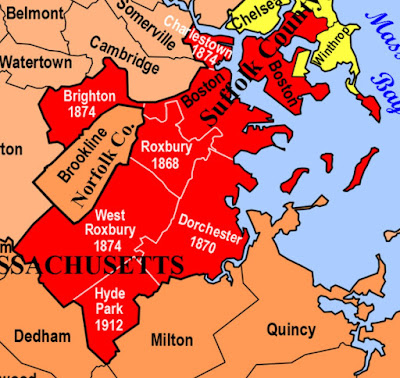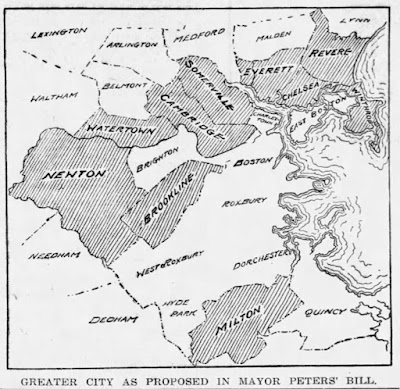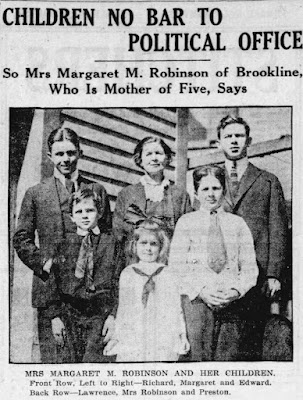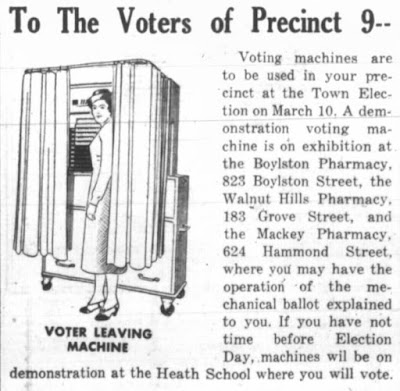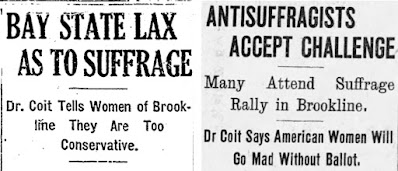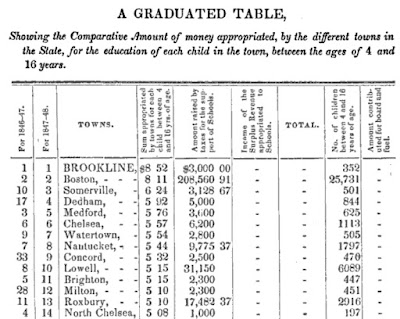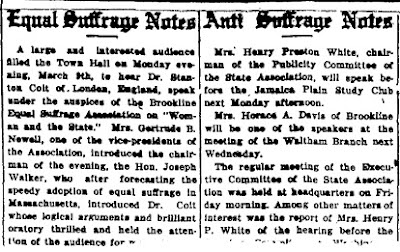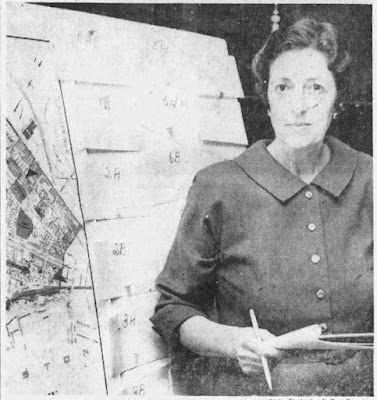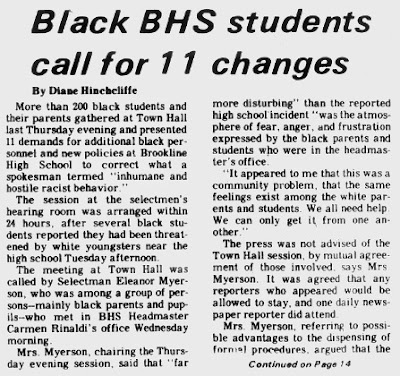 |
| Approved March 29, 1955 (Opened 1956) |
March 30,1857 - Town votes money for a library
March 26,1881 - Women’s suffrage defeated at Town MeetingMarch 26, 1931 - Longyear estate on Fisher Hill left for museum March 29,1955 - Town approves Centre Street parking lot
The public library continued to operate in the 1844 Town Hall, taking over additional space over the years, until 1869 when a new library was constructed on the site of the current Brookline Village Library.
For much more on the history of the Public Library of Brookline, see Public Library of Brookline: A History: Celebrating 150 Years of Library Service, written by library staff in 2007.
Women’s suffrage defeated at Town Meeting
 |
| William Ingersoll Bowditch and Sarah Rhea Higginson Bowditch |
In his 1875 book Taxation of Women in Massachusetts William echoed the old Revolutionary cry of "No taxation without representation."
"We men in America practice a form of tyranny over our own women," he wrote, "which we cannot help admitting to be unjust, without repudiating our own principles...."
William Bowditch died in 1909 at the age of 90. Sarah Bowditch, who was the first woman to vote in the 1880 Brookline School Board election, died in October 1919, two months before her 100th birthday and 10 months before women gained the right to vote with ratification of the 19th Amendment to the U.S. Constitution.
Longyear and her husband, lumber magnate John Longyear, were followers of Christian Science who had the house moved from Marquette, Michigan, on the shore of Lake Superior, to be near Mary Baker Eddy, founder the church. It was dismantled, moved by railroad, and reassembled between 1903 and 1906.
 |
| The Longyear mansion after its move from Michigan and reconstruction on Fisher Hill. |
Town Meeting had rejected such a proposal the previous June despite efforts from a group concerned about a growing number of vacant storefronts in the town's major shopping district.
The acquisitions led to the demolition of six Centre Street houses, four of which were used as boarding houses with multiple residents. The Centre Street parking lot opened in June 1956 with a full page announcement (shown above) from the Coolidge Corner Merchants Association in the Citizen.
(NOTE: I'm tracing what happened to the people displaced by the taking by eminent domain of the six Centre Street residences. More to come. - KL)
